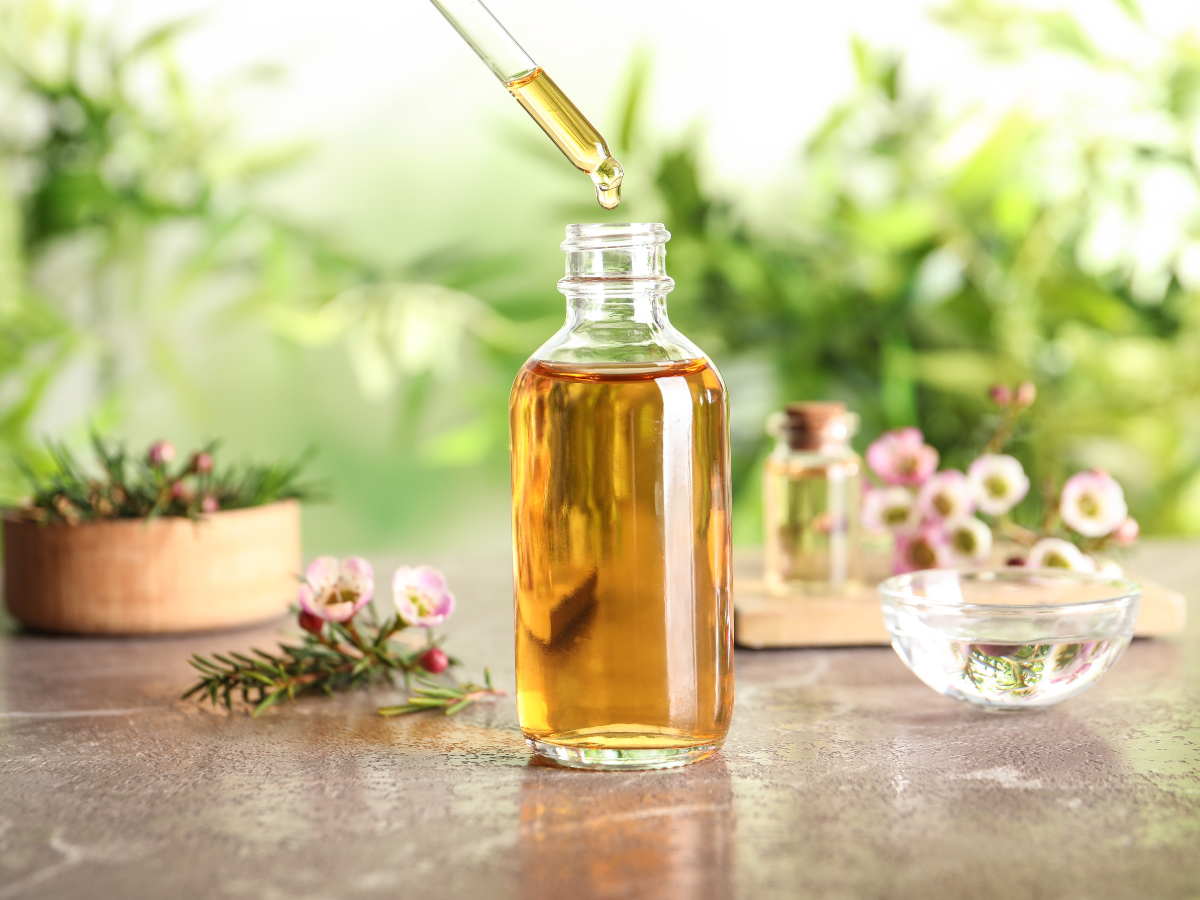Home Remedies for Glowing Skin: Naturally Radiating Skin
Home Remedies for Glowing Skin: Naturally Radiating Skin If you’re looking to achieve radiant, glowing skin, you don’t need to...

Tea tree oil, derived from the leaves of the Melaleuca alternifolia plant, is known for its powerful antiseptic and anti-inflammatory properties. It has been used for centuries as a natural remedy to treat various skin conditions. Today, tea tree benefits include everything from treating acne and soothing inflammation to reducing redness and promoting overall skin health.
Let’s explore the top benefits of tea tree oil for your skin and how to incorporate this powerful ingredient into your skincare routine.
Tea tree oil is one of the most effective natural remedies for treating acne. Its antibacterial and antimicrobial properties help reduce the bacteria on the skin that cause acne breakouts. Unlike many chemical-based acne treatments, tea tree oil doesn’t strip the skin of moisture, making it a gentler option for sensitive skin types.
How to Use Tea Tree Oil for Acne:
Tip: Always dilute tea tree oil before applying it to the skin to avoid irritation.
Learn more about tea tree oil’s antibacterial properties and its effectiveness in treating acne.
Tea tree oil has strong anti-inflammatory properties, making it ideal for reducing redness, swelling, and inflammation on the skin. Whether you’re dealing with irritated skin, inflamed acne, or eczema, tea tree oil can help calm the skin and promote healing.
How to Use for Redness:
Tip: You can also use tea tree oil in a soothing face mist by adding a few drops to water in a spray bottle.
Learn more about how tea tree oil’s anti-inflammatory properties benefit the skin.
Tea tree oil is effective in controlling excess oil production, making it great for oily and acne-prone skin. By regulating sebum production, it helps prevent clogged pores, which can lead to breakouts.
How to Use for Oily Skin:
Tip: Mix tea tree oil with witch hazel for an even more effective oil-control toner.
Learn more about tea tree oil’s role in controlling oily skin and preventing breakouts.
Thanks to its antibacterial and antifungal properties, tea tree oil can help speed up the healing process for minor cuts, wounds, and skin infections. It protects the skin from infection while promoting faster recovery.
How to Use for Wounds:
Tip: Avoid using undiluted tea tree oil directly on open wounds, as it may cause irritation.
Learn more about how tea tree oil accelerates wound healing and prevents infection.
Tea tree oil’s antifungal properties make it an effective treatment for conditions like athlete’s foot, nail fungus, and ringworm. It penetrates the skin to kill fungal infections and prevent them from spreading.
How to Use for Fungal Infections:
Tip: You can also use tea tree oil as a foot soak by adding a few drops to warm water.
Learn more about tea tree oil’s antifungal properties and how it fights infections.
Tea tree oil offers a wide range of benefits for the skin, from treating acne and reducing inflammation to speeding up wound healing and fighting fungal infections. As a natural, versatile ingredient, tea tree oil can be easily incorporated into your daily skincare routine for clearer, healthier skin. Remember to always dilute it before use and do a patch test to ensure it’s suitable for your skin type.
Try adding tea tree oil to your skincare regimen today and experience its powerful, natural benefits!
Home Remedies for Glowing Skin: Naturally Radiating Skin If you’re looking to achieve radiant, glowing skin, you don’t need to...
Tea Tree Benefits for Skin: Natural Remedies for Clear Skin Tea tree oil, derived from the leaves of the Melaleuca...
Tea Tree Oil Benefits: A Natural Remedy for Skin & Hair Tea tree oil, derived from the leaves of the...